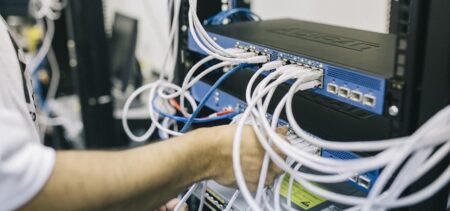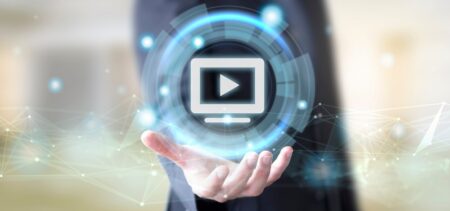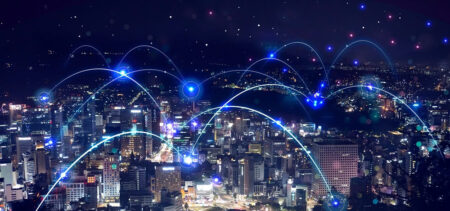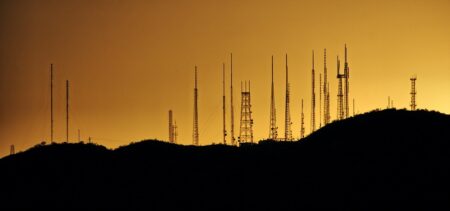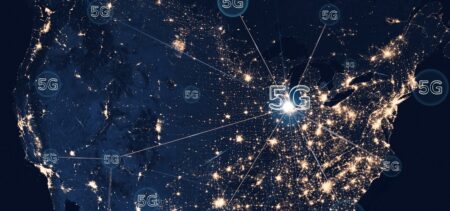A journey through smart cities starts with cutting-edge technologies like IoT, 5G networks, cloud computing, and AI. Our journey will be fast but smooth, using only the most essential resources, enhancing sustainability, and improving the quality of life in urban areas. Besides sci-fi stuff like real-time data collection that reduces decision-making fatigue, citizens of smart cities enjoy a fully personalized experience, from retail and entertainment to healthcare and security. Some of the synonyms we will be using in this article instead of the term “smart city” include: “connected city,” “resilient city,” “sensible city,” “intelligent community,” “digital city,” “digital community,” and even “smart village.”
Telecommunications: Driving Efficiency in Connected City Initiatives
Connected city initiatives are swiftly spreading across nations nationwide. It seems the logical next step in our evolution, as it is in human DNA, to constantly seek ways to improve our quality of life. It seems that, finally, technology is catching up to our imagination, but as you’ll see in this article, we are not quite there yet. Luckily, we have sustainable telecommunications to help us support the success of these initiatives. And it is crucial we begin with digital infrastructure:
1. Telecommunications help in managing traffic, reducing commute times and dispelling traffic congestion. AI monitors and optimizes traffic flow in real time, helping drivers and pedestrians reach their destinations without unnecessary delays.
2. Advanced parking systems save time for drivers by quickly locating the nearest parking spots and delegating them via an interconnected mobile app that functions on a city-wide level instead of individually.
3. AI-fueled street lighting conserves energy by dimming lights when no one needs them and brightening up when necessary.
4. Digital communities utilize advanced technology to manage, conserve, and distribute energy, reducing their carbon footprint.
5. Waste management technology intelligently notifies sanitation crews when bins are full.
6. Telecommunications enable video surveillance, emergency response, and disaster management, leading to faster response times and better crisis management. As an extension, police wear cameras and transparently share the footage, promoting accountability in law enforcement.
7. Sensor networks collect data on various aspects of city life, such as air quality and noise levels. Then, analysts can track this data to identify patterns and make informed decisions that improve the quality of life for citizens.
8. In smart communities, citizens can engage with their government through digital platforms. The fact that people can participate in decision-making leads to higher satisfaction among citizens.
Smart Cities Thrive on Unified Infrastructure
When cities implement AI-powered technology initiatives individually, without a unifying infrastructure, the results are often suboptimal. Ownership and oversight of different smart city initiatives are distributed among various departments, causing fragmentation. Most of the time, individual systems don’t integrate smoothly, which results in costly redundancy.
On the other hand, when any new system builds the foundation for the entire infrastructure before individual technologies, it allows for the free flow of data. In the long run, underlying infrastructure saves time, money, and effort. Then, after the integration and management of various intelligent community features, data generated by one smart city program can fully benefit others.
Welcome to Fujisawa Sustainable Smart Town
The Fujisawa Sustainable Smart Town is a modern housing estate with white houses arranged in circles and rows around a central plaza. What sets it apart is that every house is equipped with solar panels on its roof. Upon closer inspection, you’ll notice the well-maintained landscaping, the abundance of trees, and the absence of utility poles. This is all part of Panasonic’s GREEN IMPACT Business Solution.
This futuristic complex is the result of the smart city initiative aimed at creating entire communities that are eco-friendly, secure, and comfortable to live in. It builds on the company’s decades of experience developing and manufacturing home appliances and, more recently, its innovations in overall home automation.
Nestled approximately 50 km south of Tokyo, near the town of the same name, Panasonic built a digital community called Fujisawa SST. It was the first of three such communities to emerge in Japan. It is a beacon of Panasonic’s effort to reach full sustainability. Showcasing the reuse of resources, the “smart town” arose from the rubble of an abandoned manufacturing facility. Construction lasted less than two years, and the first residents settled in back in 2014. It currently accommodates 600 households and is advertised as a bustling community.
A key priority is ensuring the safety and security of residents. While in some countries, this is achieved through gated communities with physical barriers, Panasonic has developed a “Virtual Gated Town” in Fujisawa that remains open and accessible to visitors from outside. However, the number of entrances is limited and monitored by security cameras. Each property has a security system that allows remote monitoring of inside and outside these “smart” dwellings.
Residents of the Fujisawa SST community have access to a mobility service that offers electric vehicles and bicycles for rent 24/7. Users can touch a special card on any available vehicle to authorize and track their usage period to use the service. According to a Panasonic spokesperson, this service bolsters mobility and encourages those without their car to be more active while minimizing the community’s CO2 emissions.
Connectivity: The Heart of Smart City Transformation
Connectivity is the cornerstone for transforming communities into “sensible cities” that enable improved communication between people and systems. Such an intelligent ecosystem allows citizens to participate and feel part of a movement. The statistics below illustrate the importance of connectivity in shaping smart cities:
- The global “digital city” market might reach 820.7 billion USD by 2025, based on a statistic by MarketsandMarkets.
- Smart city technologies have the potential to generate 20 trillion USD in benefits over the next decade, as reported by the McKinsey Global Institute.
- By 2025, we will see 41.6 billion connected IoT devices generating 79.4 zettabytes (ZB) of data, according to the International Data Corporation (IDC).
Telecommunications Challenges in Smart Cities
The role of telecommunications in smart cities brings numerous benefits, but, as we said, it is not without challenges:
Deploying telecommunications infrastructure requires immense investments, which is why most communities delay the decision to innovate. High-speed broadband networks and IoT devices also depend on educated personnel and careful planning, again, an asset not so easily acquired.
Interconnectedness is the key ingredient to making digital cities as efficient and cost-effective as possible. That means different devices and systems must work together seamlessly, but that is an undertaking that necessitates the collaboration of skilled IT professionals and the government. Then, after they create a plan, they need to standardize protocols and interfaces to ensure that everything can be easily integrated and compatible with each other, which is a costly endeavor.
We haven’t yet erased the digital gap. There is still a disparity between those with access to digital technologies and those without, which poses a challenge in implementing telecommunications to digitize cities. We must cross this divide in order to ensure equal opportunities for all citizens, regardless of their digital access.
Building a “smart village” with proper connectivity demands a lot of new and expensive infrastructure. Governments and telecom companies must also collaborate to establish the necessary networks and extend reliable connectivity.
As data progressively becomes the building block of these cities of the future, we must also upgrade our security measures game. Applying stringent data privacy policies will ensure we can protect sensitive information and build trust among residents.
Looking Ahead
Cities worldwide are building, or at least trying to embrace, a “smarter” future. To achieve the full potential of technology that can help us create vibrant, resilient, and sustainable communities, we must invest in state-of-the-art digital infrastructure. We also have to keep in mind that collaboration between the public and private sectors is a crucial factor. We have at least one example to look up to, as Panasonic plans to replicate the Fujisawa model in other regions and countries. Other communities around the globe can learn a lot from this pioneering community, which will shape the future of urban progress.
On a smaller scale, optimizing transportation systems and improving public safety betters our lives and makes us happier. On a larger scale, advanced urban development programs increase sustainability factors, ultimately mitigating growing threats from climate change. Ultimately, as municipalities worldwide embrace new technology to meet our visions of the future halfway, this brighter, more connected world seems much more easily attainable.


